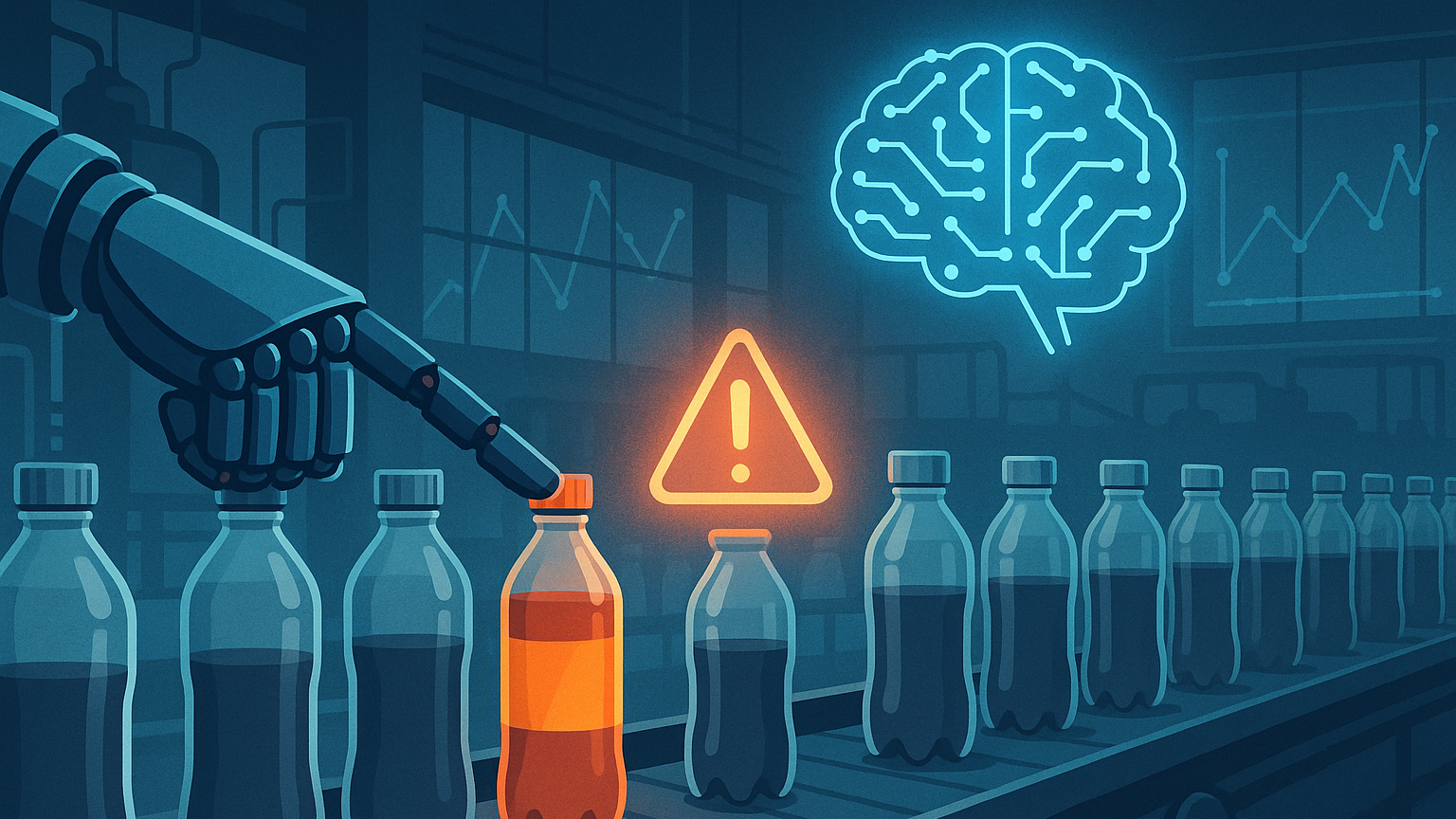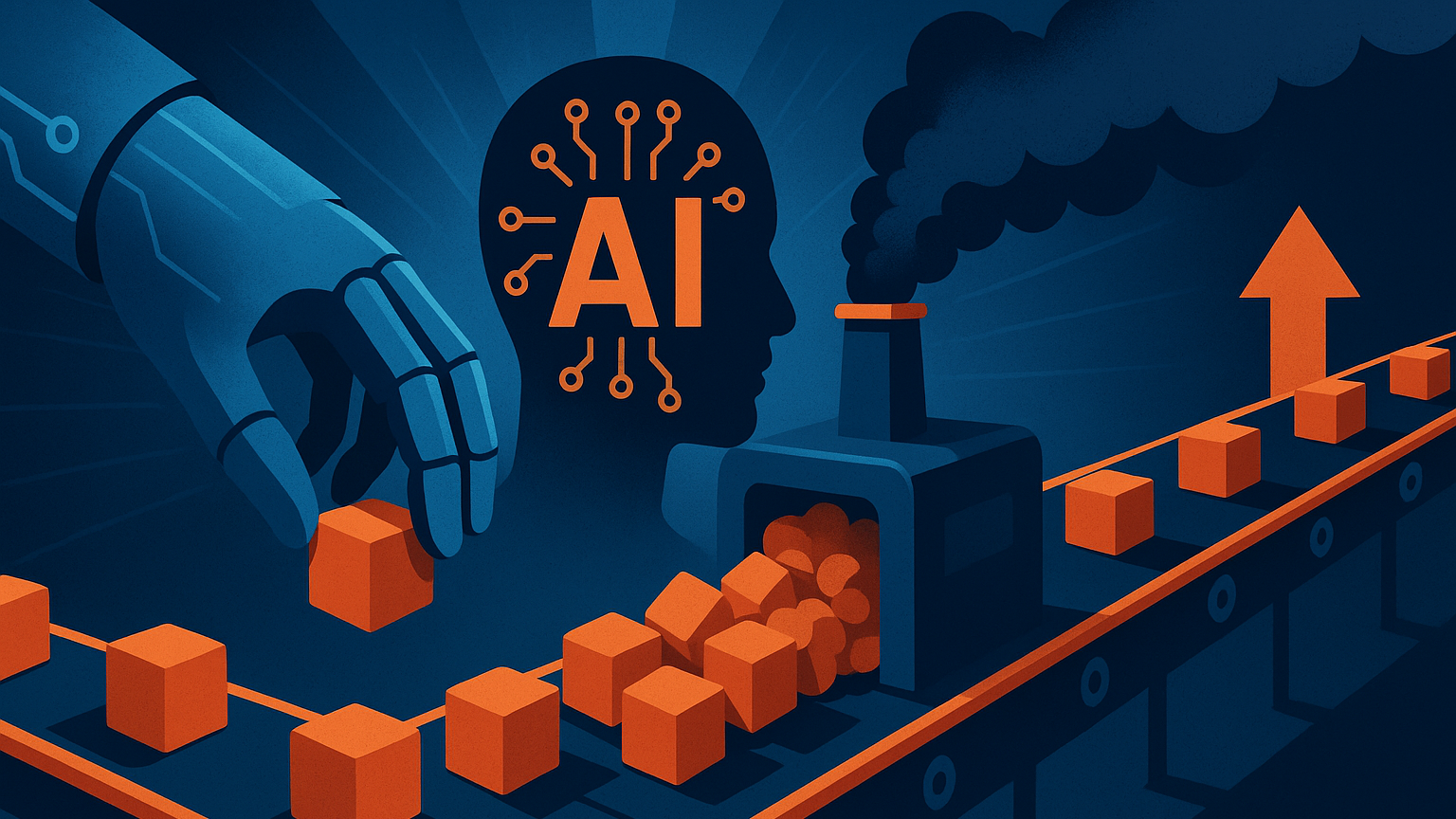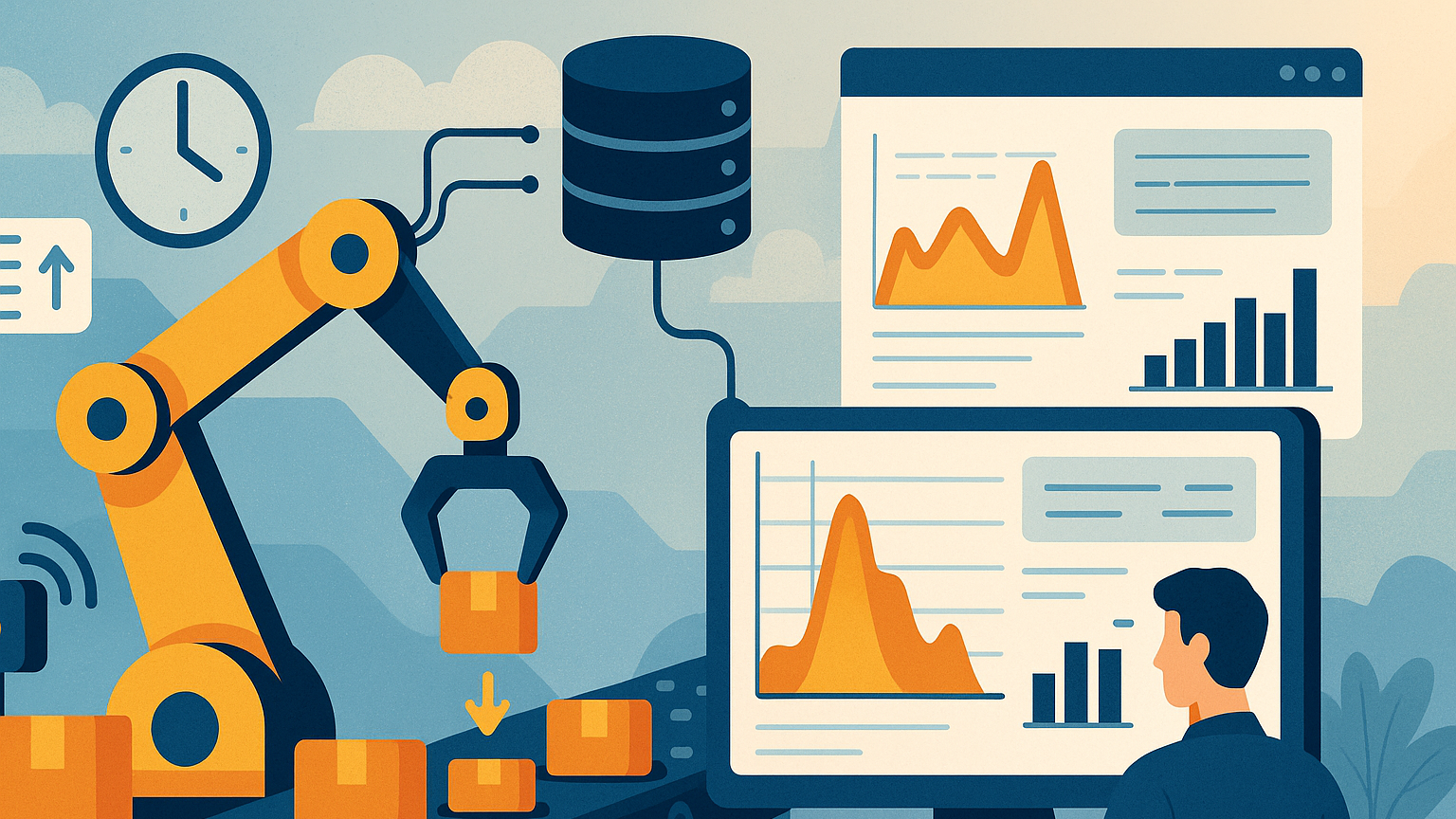
AI in Operations Management for Bottleneck Identification and Analysis
You’re looking at a topic that can change how work flows across your organization: using AI to find and fix bottlenecks. In operations management, bottlenecks are the places that slow everything else down, and they quietly destroy throughput, increase costs, and frustrate teams. This article walks you through how AI specifically helps you detect, analyze, predict, and alleviate bottlenecks, giving practical advice you can apply across industries from manufacturing to healthcare to software delivery.
Why bottleneck identification matters in operations management
You need bottleneck identification because inefficiencies accumulate and compound. When one stage in your process slows, it forces work-in-process inventory, idle capacity elsewhere, longer lead times, and reduced customer satisfaction. Pinpointing bottlenecks quickly and accurately lets you free up capacity, improve throughput, lower costs, and make your operations predictably better. AI helps you find those constraints faster and with more confidence than manual observation alone.
Traditional bottleneck identification methods
If you’ve worked in operations, you already know traditional methods: time-and-motion studies, value stream mapping, Gantt charts, and manual throughput measurements. Those approaches require human observation, sampling, and experience, and they often miss dynamic or intermittent constraints. They’re good for initial diagnosis but can become time-consuming or misleading in complex, high-variability systems. AI complements these methods by scaling analysis and continuously monitoring processes.
How AI changes the game: an overview
AI enables continuous, automated detection of patterns you can’t see easily with human inspection. It ingests streams of data—transaction logs, sensor readings, machine telemetry, camera feeds, and unstructured reports—and converts them into actionable insights. With AI, you can move from periodic audits to real-time monitoring, from hindsight to foresight, and from broad guesses to targeted experiments. The result is that you can locate bottlenecks earlier, understand their root causes, and test fixes faster.
Types of AI techniques relevant to bottleneck identification
AI for bottlenecks is not a single algorithm but a toolbox. You’ll use anomaly detection to spot sudden slowdowns, predictive models to forecast future constraints, process mining to reconstruct workflows from logs, simulation and digital twins to test interventions, reinforcement learning to optimize resource allocation, computer vision to monitor physical processes, and NLP to extract signals from reports and maintenance logs. Each technique addresses a different aspect of identification and analysis.
Data-driven anomaly detection
Anomaly detection models watch your operational signals—cycle times, queue lengths, throughput—and flag deviations from normal behavior. You’ll find unsupervised techniques like clustering and autoencoders useful when labeled incidents are scarce, and supervised approaches helpful when you have historical bottleneck labels. The main advantage is that anomaly detection can alert you to emerging constraints before they significantly impact overall performance.

Predictive analytics and forecasting
By building predictive models on historical patterns, you can forecast where and when a bottleneck is likely to occur. Time-series forecasting, regression, and ensemble methods help you understand seasonal demand spikes, machine wear patterns, or staffing shortfalls. Predictive approaches let you move from reacting to proactively allocating resources, scheduling maintenance, or re-balancing workloads ahead of time.
Process mining and event log analysis
Process mining reconstructs your processes from event logs—ERP, MES, WMS, ticketing systems—and reveals the actual flow rather than the intended one. You get visual maps of sequences, frequencies, and cycle times and can automatically identify the activities where work piles up. Process mining is particularly powerful because it connects data to the way work actually moves, allowing you to see repetitive bottlenecks and non-standard paths that create congestion.
Digital twins and simulation with ML
A digital twin is a data-driven simulation of your physical or operational system. When you combine simulation with machine learning, you can run “what-if” scenarios at scale, using AI to explore a huge space of interventions and outcomes. You can simulate adding capacity, changing sequences, shifting priorities, or deploying alternative staffing models to see how each choice affects bottlenecks under different demand scenarios.
Reinforcement learning for resource allocation
Reinforcement learning (RL) trains agents to make sequential decisions to maximize long-term objectives, which suits problems like dynamic scheduling and resource allocation. If your environment is complex and rules-based fixes don’t exist, RL can discover policies that minimize queue lengths or maximize throughput, effectively learning where to allocate resources to relieve bottlenecks over time.

Computer vision and sensor analytics
On the shop floor and in warehouses, cameras and sensors provide rich data that AI can analyze. Computer vision can count items, detect stalled conveyors, spot operator inefficiencies, and recognize near-miss incidents that correlate with future slowdowns. Combining visual analytics with sensor data (vibration, temperature, RFID reads) gives you a much fuller picture of physical bottlenecks and the conditions that precede them.
NLP for unstructured operational data
A lot of operational knowledge lives in unstructured text—maintenance logs, operator notes, customer complaints, and incident reports. Natural language processing (NLP) can extract themes, sentiment, and root-cause indicators from this text, linking narrative evidence to quantitative signals. That helps you surface patterns like recurring machine faults or process ambiguities that contribute to bottlenecks.

Edge AI and IoT integration
When latency or bandwidth is an issue, you’ll want analytics at the edge. Edge AI processes sensor and camera data locally, providing real-time alerts where delays would worsen bottlenecks. Integrating IoT devices with AI pipelines lets you instrument the physical environment and act quickly on local anomalies—triggers that otherwise might be lost in centralized processing.
Data requirements and instrumentation
You can’t build effective AI without the right data. You’ll need timestamps, event IDs, resource identifiers, cycle times, queue lengths, quality metrics, and context like shift patterns or order priorities. Instrumentation often requires adding sensors, improving logging standards, and ensuring consistent event sequencing. Start by mapping what data you have and what’s missing, and prioritize instrumentation where the business impact is highest.

Building a pipeline: from data to insights
Your AI pipeline must reliably ingest, clean, enrich, and store data, then feed models and dashboards. Data cleansing includes deduplication, timestamp alignment, and dealing with missing values. Enrichment might add product attributes, skill levels, or external demand signals. Make sure your pipeline supports incremental updates and replay for debugging; operational teams need fast, trustworthy answers, and a robust pipeline is foundational to that trust.
Model selection and evaluation
Choose models based on the problem, data volume, and explainability requirements. Simple statistical models and rule-based systems are often a great first step because they’re transparent and fast. As you scale, ensemble methods, gradient boosting, and neural networks can capture more complex patterns. Evaluate models not just on accuracy but on business metrics—reduction in queue times, faster mean time to recovery, or increased throughput—so you measure what matters.
Interpretability and explainability: making AI useful for operations teams
Your operations teams will adopt AI only when they understand and trust it. Explainability tools help you trace model outputs back to features and events, allowing operators to see why a machine flagged a bottleneck. Use visualizations, counterfactuals (what would remove the alert), and simple rule approximations alongside your models so teams can audit, challenge, and improve AI-generated insights.
Human-in-the-loop and change management
AI augments human judgment, it doesn’t replace it. You should design workflows where operators can confirm, override, and annotate AI findings. That human feedback becomes valuable training data, improves model performance, and builds trust. Change management also means documenting decision rights, training staff on new tools, and running pilot programs that show clear value before broad rollout.
Implementation roadmap: pilot to production
Start with a focused pilot on a high-impact process that has good data and engaged stakeholders. Your pilot should define success criteria, collect baseline metrics, and run for a fixed period. Once the pilot meets objectives, harden the data pipeline, automate model retraining, set up monitoring and alerting, and integrate recommendations into daily workflows. Scale by repeating the process in other areas, applying lessons learned.
KPIs and metrics to track ROI
Track both technical and business KPIs. Technical metrics include model precision, recall, false-positive rate, and mean time to detection. Business KPIs include throughput, lead time, on-time delivery, utilization, inventory levels, and cost per unit. You should also monitor softer measures like operator satisfaction and incident resolution time—these often reveal adoption issues or hidden benefits.
Sector-specific example: manufacturing
In manufacturing, AI finds bottlenecks caused by machine downtime, quality rework, or imbalanced assembly lines. You’ll use sensor data, PLC logs, and MES event streams to detect anomalies in cycle times, predict machine failures with predictive maintenance models, and simulate line changes with digital twins. The payoff is higher machine uptime, smoother flow, and less WIP inventory.
Sector-specific example: logistics and warehousing
Your warehouses have throughput dictated by picking rates, routing inefficiencies, and staging choke points. AI can analyze scanner logs, RFID reads, and worker GPS to identify persistent congestion in certain aisles, predict peak congestion windows, and propose dynamic slotting or route changes. Often simple AI-led changes increase pick rates and reduce travel time dramatically.
Sector-specific example: healthcare
In healthcare operations, bottlenecks often appear in patient flow, imaging scheduling, or lab processing. AI can predict patient admission surges, identify process steps where patients wait longest, and recommend resource reallocation like staffing shifts or equipment prioritization. Importantly, AI must work within strict privacy rules and be explainable to clinical teams.

Sector-specific example: retail and e-commerce
E-commerce suffers bottlenecks in order processing, fulfillment, and last-mile delivery. AI can forecast demand surges for SKUs, spot fulfillment center constraints, and dynamically reroute orders to balance workload. In peak seasons, predictive allocation and automated prioritization of orders can significantly reduce late shipments.
Sector-specific example: call centers and customer service
Your support operations choke when call queues grow and skills mismatch increases handle time. AI analyzes call logs, transcript content, and routing patterns to identify where calls pile up and which agents or tools would reduce congestion. Predictive routing, workforce optimization, and real-time agent assistance reduce wait times and improve first-contact resolution.
Sector-specific example: IT operations and software delivery
In software delivery and IT operations, bottlenecks manifest in deployment pipelines, build queues, or incident response. AI can analyze CI/CD logs, incident tickets, and telemetry to detect slow builds, problematic tests, or recurring deployment failures. Automating triage, prioritizing hotfixes, and optimizing pipeline resources help you deliver features faster.
Case study (hypothetical): relieving a bottleneck in an assembly line
Imagine you manage an assembly line where Station C suddenly becomes the slowest step, increasing WIP and delaying shipments. You instrument machines to emit cycle timestamps, add cameras for visual verification, and capture operator notes in structured logs. An anomaly detection model flags increased cycle time at Station C, while process mining shows that upstream variability causes imbalanced arrivals. A digital twin simulates adding one worker versus increasing buffer at Station C; the simulation combined with RL suggests a small schedule change and targeted preventive maintenance will remove the constraint. You pilot the changes, measure throughput increases, and scale the solution to sister lines.
Pitfalls and common failures
AI projects fail when data quality is poor, objectives are vague, or stakeholders aren’t involved. Beware of alert fatigue from noisy models, false positives that erode trust, and solutions that optimize narrow metrics at the expense of the whole system. Always validate AI recommendations against the full process and ensure you’re not creating new bottlenecks elsewhere.
Dealing with data quality issues
You’ll encounter missing timestamps, inconsistent event IDs, and duplicate records. Invest early in data hygiene: normalize timestamps, unify identifiers across systems, and establish logging standards. Implement automated checks and dashboards to monitor data quality so your models don’t learn from noise.
Explainability and regulatory concerns
In regulated industries, you must justify AI-driven decisions, particularly when they affect safety or compliance. Use transparent models when possible and maintain audit trails. Document model development, datasets, and assumptions so you can explain why a model flagged a bottleneck and what evidence supports recommended actions.
Governance, privacy, and security considerations
When you collect sensor and operational data, you must consider data ownership, retention policies, and access controls. Sensitive datasets—patient records, customer info, employee video—require strict privacy safeguards. Secure your pipelines with encryption, access logs, and separation of duties to prevent misuse and ensure compliance with relevant regulations.
Tools, platforms, and technologies to consider
You’ll find purpose-built process mining tools, cloud ML platforms, open-source libraries for time-series and anomaly detection, and edge AI SDKs for on-premises inference. Popular choices include process-mining vendors, MLOps platforms for deployment and monitoring, and cloud services for scalable training. Pick tools that integrate with your existing stack and provide the observability your operations teams need.
Teams, skills, and organizational structure
Successful AI in operations requires cross-functional teams: operations SMEs, data engineers, data scientists, and software engineers. Pair model builders with operators who understand the process, and ensure a clear product owner owns the business outcome. Invest in upskilling your operations teams so they can interpret AI outputs and take corrective action.
Cost, timing, and ROI estimation
Estimate ROI by comparing reduced lead times, improved throughput, reduced inventory, and fewer expedited shipments against the cost of sensors, cloud compute, and engineering time. Pilots typically take 6–12 weeks to show results for focused problems; full rollouts vary by scope. Start small with a clear business case and scale results as you demonstrate value.
Best practices checklist for deployment
When you’re ready to deploy, make sure you have these basics covered: clearly defined objectives tied to business KPIs, good data instrumentation, an iterative pilot, human-in-the-loop processes, explainability and monitoring, and a roadmap for scaling. Treat AI as a continual improvement capability rather than a one-off project so it can adapt with operational changes.
Continuous improvement and lifecycle management
Models degrade as processes and demand patterns shift. Set up continuous monitoring, automatic retraining triggers, and periodic business reviews. Capture operator feedback as labeled data and use it to refine models. Your goal is a living capability that grows more accurate and trusted over time.
Future trends: generative AI, multi-modal models, and self-optimizing systems
Emerging trends include generative AI summarizing root causes from mixed data, multi-modal models that combine video, sensor, and textual data, and adaptive systems that continuously adjust schedules or routes in production. You should keep an eye on these because they’ll make bottleneck identification even more proactive and autonomous in the coming years.
Final recommendations and next steps for you
Start by mapping one high-impact process and auditing the data you already have. Run a small pilot with simple anomaly detection and process mining to prove value quickly. Engage your frontline operators early, use human-in-the-loop workflows, and be disciplined about measuring business outcomes. Once you’ve demonstrated success, scale iteratively and build an organizational competency for AI-driven process improvement.
